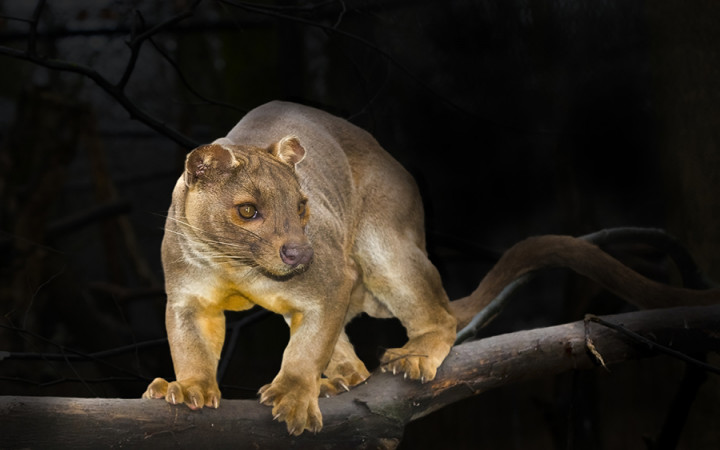Today’s Wonder of the Day was inspired by Avery. Avery Wonders, “What is a fossa” Thanks for WONDERing with us, Avery!
Imagine you're an ancient mariner who left the European coast with a ship loaded with goods bound for new and undiscovered lands. You sail south along the western coast of Africa and round the southern tip.
You've never been along the eastern coast of Africa before, and you begin to WONDER what new lands you'll discover as you sail north. One night, a fierce storm blows in and, before you realize what has happened, you awake to find your ship beached on a strange island.
As you set foot on the island to explore with your crew, you are amazed by the sights and sounds that greet you. Tall trees form a forest before you. Strange creatures peek out from the shadows. Where have you landed?
Resting beneath a large tree, you feel as if you're being watched. You close your eyes and soon sense the presence of a predator approaching. You open your eyes and peer into a pair of cat-like eyes. The muzzle of the creature reminds you somewhat of a dog. Its long, lean body ends in a tail that resembles that of a monkey.
Have you discovered a new animal hybrid of cat, dog, and monkey? Nope! You've landed on the shores of Madagascar and come face-to-face with its top predator. What are we talking about? A fossa, of course!
Although it might resemble a mixture of other, more familiar animals, the fossa is related to the mongoose. Known to scientists as Cryptoprocta ferox, the fossa is a creature unique to the forests of Madagascar, a large island in the Indian Ocean off the east coast of Africa known for its diverse, interesting animals.
The fossa can stretch up to six feet long from its nose to the tip of its tail and weigh up to 26 pounds. Its slender, muscled body, sharp teeth, and retractable claws make it a formidable opponent in the forest.
In fact, the fossa is the largest carnivore and top predator on the island. The fossa's favorite food is the lemur. It'll eat about anything it can find, though, including wild pigs, fish, birds, and mice.
Fossas tend to be solitary animals rather than hanging out in groups. To communicate the territory they claim and keep track of one another, fossas use scent glands on the chest and under the tail to mark the ground, rocks, or trees.
Fossas are active both during the day and the night. They spend time on the ground and in the trees, so they're very hard to observe in the wild. When in the trees, they can move very quickly, using their long tails to help keep their balance.
Today, the fossa is considered a vulnerable species because of habitat loss. Fossas rely heavily on Madagascar's forests. Unfortunately, less than 10% of the island's original forests remain intact today.





